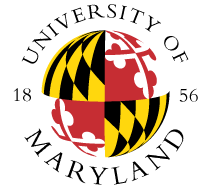Bay 101
Virtual Excursion Report, 11/30
Across the numerous videos I watched, the major concept of pollution and how it affects the Chesapeake Bay is discussed. Anthropogenic actions lead to runoff and air pollution and are detrimental to the overall health of the Chesapeake Bay. A few of the main sources of pollution described by the Chesapeake Bay Program include human waste, human food preparation, and simply daily living. This pollution also impacts the living organisms in the bay and can lead to their extinction. Pollution also causes poor water quality which hinders growth and survival of Bay grasses and makes it difficult for fish to see their prey and avoid being eaten. The series also discusses conservation efforts that are currently being taken to sustain the populations of these endangered species, as well as encouraging individuals to take action to conserve these organisms and fight against pollution. There have been numerous upgrades in wastewater treatments over the years including plants designed to remove nitrogen from the water.
I found the main points discussed in the series highly convincing. Each of the points discussed was followed up and defended by real-world actions being taken in the Chesapeake Bay. For instance, the overarching message across the video series was the causes and effects of pollution in the Bay.
In the video on wastewater treatment, it is stated directly that the anthropogenic causes of pollution in the Chesapeake Bay are due mainly to human waste, food preparation, and daily living. It’s also stated in the video about watershed connections that bodies of water from several different states connect back to the Bay and pollution in these waters eventually ends up in the Chesapeake Bay.
The Chesapeake Bay Program also discusses how pollution affects several living organisms. To name a few, freshwater mussels, blue crabs, and oysters have all seen low numbers in their populations, leading to conservation efforts being taken. Mussels help in purifying the aquatic system, thus improving water quality, while oysters remove phytoplankton from the water surrounding them. Conservation efforts have been taken for both of these organisms to help sustain their populations. If both of these species are crucial in purifying the Bay, and their populations are steadily decreasing, the water quality will only continue to get worse.
I am aware of additional information that supports the main points discussed in the video series. From taking AP Environmental Science in my senior year of high school, I learned about the many conservation efforts that are being taken in the Chesapeake Bay. In both APES and the Chesapeake Bay Program, wetland restoration and its importance are discussed. Wetlands not only help clean and filter the bay, but they also produce food needed for species populations to grow and thrive. Wetlands are currently depreciating rapidly due to human activities, such as industrialization, agriculture, and altered water flow and quality. This ultimately leads to habitat loss, which then leads to a loss of biodiversity. It also impacts flood control and water filtration, two processes that are regulated by wetlands.
Finally, the Chesapeake Bay Program described an event in 2012 that led to the death of many fish in the water. An algae bloom in Anne Arundel County was caused by excessive nutrient runoff, causing extremely low oxygen levels in the water and ultimately leading to the death of many fish. Anthropogenic pollution has caused decreased water quality, mass death, and the potential extinction of numerous organisms.
Action must be taken to combat this pollution, not only in the Chesapeake Bay but in water bodies all over the world. I did not observe any logical fallacies or failures of critical thinking when watching this video series.


